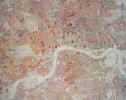6. Attitudinal issues: class

David Urquhart, who had seen people of all classes mixing freely in the baths of Constantinople, believed that the Turkish bath could break down class barriers.
No barrier of ceremony, of pride, or of habit, is so great as that of filth which, in these times, especially in large towns, separates the poor from the rich, as if they were not members of the same state, but, as Disraeli has phrased it, ‘the two nations.’20
But British middle class officialdom was not at all happy with such an approach. Many medical officers of health and local politicians, for example, were just as prejudiced against the provision of inexpensive Turkish baths for the working classes as the doctors who feared for their livelihood.21
It was believed, almost certainly incorrectly, that the original Baths and Wash-houses Acts of 1846 and 1847 precluded the provision of publicly financed Turkish baths.
London didn’t get one till 1905, but several provincial towns built them with impunity—others more cautiously called them vapour baths, which were permitted.22
The majority of early Turkish baths were, therefore, commercial establishments. While publicly financed baths were not permitted to charge more than 2d for a second class vapour bath, no commercial concern could break even, let alone make a profit, at that price.
As a result, Turkish baths were rarely built in the poorer areas where they were most needed. This can be seen clearly in London if we superimpose establishments on Booth’s 1889 poverty map; preferred locations were more often adjacent to railway stations used by commuters travelling home to the suburbs.

Working class bathers faced another barrier. When, in 1864, Bury Council unanimously decided to open their Turkish baths for a few hours on Sunday mornings, there was an outcry.
‘J.W.A.’ wrote to the Bury Times that ‘it was a disgrace to the town’23 and asked bathers to boycott the baths on Sundays. Letters for and against followed, one supporting the council even coming from outside the town. William Cooper wrote,
We have a Turkish Bath in Rochdale which is open on a Sunday, and the Christians here—who are I suppose as good as the Bury Christians—make no objection. And why should they? They are not compelled to go.24
After several weeks the correspondence was closed—and the baths remained open.
Yet over twenty years later, pressure from church and chapel prevented William Bishop’s Putney baths from opening on Sunday—the only day, he argued, the working classes had sufficient time to use them.25


